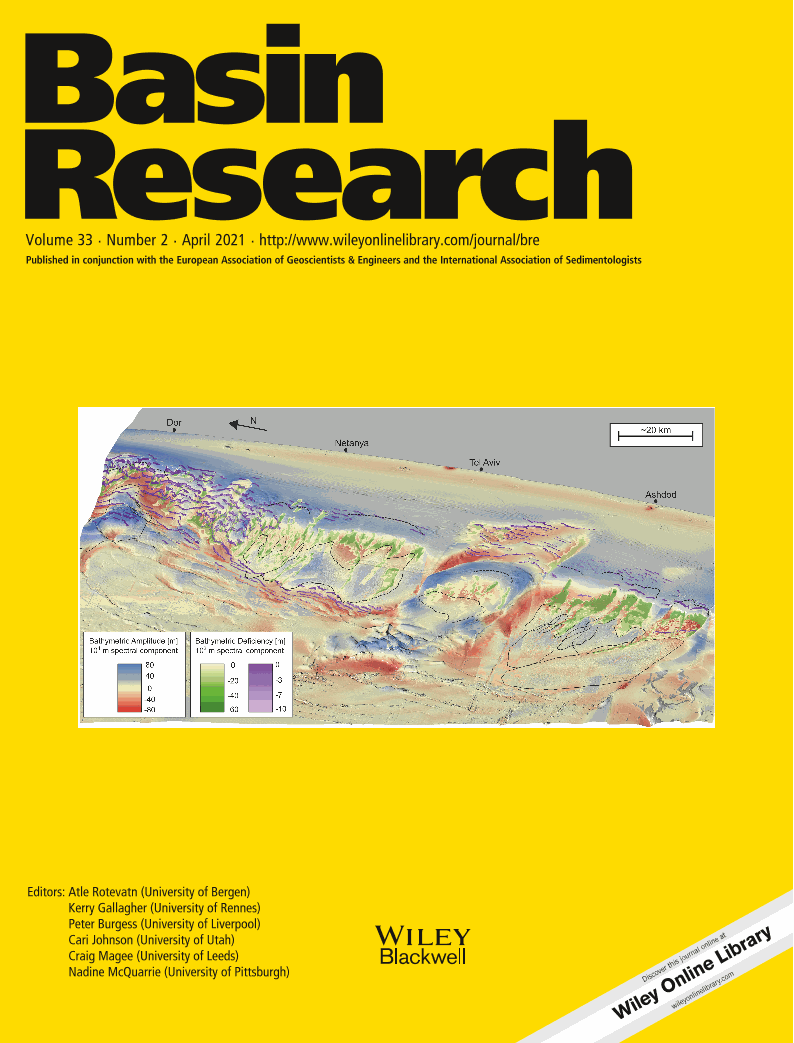
Full text loading...
 , Ari Matmon1
, Ari Matmon1 , Yigal Erel1
, Yigal Erel1 , Alan J. Hidy2
, Alan J. Hidy2 , Onn Crouvi3, Mike De Wit4, Yona Geller1, ASTER Team5,*
, Onn Crouvi3, Mike De Wit4, Yona Geller1, ASTER Team5,*
Capture areas of the western Okavango Basin during the Pliocene (a) and the early Pleistocene (b). The change in provenance that occured around the Pliocene‐Pleistocene transition is attributed to adjustments of the drainage systems to axial crustal uplift, resulting in the formation of large waterbodies.
The structural depression that occupies the Okavango Basin in southern Africa comprises a depo‐centre within the intracratonic Kalahari Basin where sediments of the Cenozoic Kalahari Group have accumulated. The Okavango Basin has been formed due to stretching and subsidence at an area of diffused deformation, southwestwards to the main East African Rift System (EARS). Sediments from two full Kalahari Group sequences, located on opposite sides of the Gumare Fault that forms a major fault within the Okavango Basin, were studied to determine their provenance and chronology. Terrestrial Cosmogenic Nuclide (TCN) 26Al/10Be burial dating was used to constrain a chronostratigraphical framework, and Pb, Sr, and Nd isotopic ratios combined with geochemical and sedimentological analyses were applied to track the source areas of the sediments.Results indicate the following sequence of basin filling: (a) Accumulation between ca. 4–3 Ma during which the currently downthrown (southern) block received a mixture of sediments mostly from the Choma‐Kalomo, Ghanzi‐Chobe, and Damara terranes, and possibly from the Lufilian Belt and/or Karoo basalts during earlier stages of deposition. Simultaneously, the upthrown (northern) block received sediments from more distant Archean sources in the Zimbabwe and/or Kasai cratons, (b) Hiatus in sedimentation occurred at both sites between ca. 3–2 Ma, (c) Sediments on both sides of the Gumare Fault share a similar source (Angolan Shield) with minor distinct contributions to the downthrown block from the Kasai Craton and local sources input to the upthrown block, and (d) Regional distribution of aeolian sand since at least 1 Ma. The change in source areas is attributed to rearrangements of the drainage systems that were probably linked to vertical crustal movements on the margins of the Okavango Basin. The tectonically induced morphodynamics controlled the landscape evolution of the endorheic basin where vast lakes, wetlands and salt pans have developed through time.
]
Article metrics loading...

Full text loading...
References


Data & Media loading...

